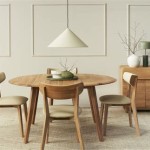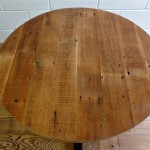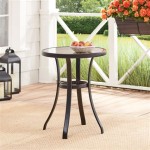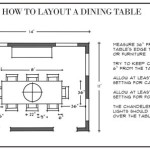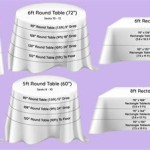How to Make a Fitted Tablecloth for a Rectangular Table Top
A fitted tablecloth, also known as a tailored tablecloth, is a practical and elegant solution for covering a rectangular table top. It provides a clean, polished look while staying securely in place, preventing it from slipping or bunching up. Making a fitted tablecloth is a rewarding DIY project that allows you to create a custom piece that perfectly complements your table and dining space.
1. Gather the Necessary Supplies
Before starting your fitted tablecloth project, ensure you have all the required materials:
- Fabric: Choose a fabric suitable for tablecloths, considering both aesthetic and functional factors. Cotton, linen, and blends are popular choices due to their durability and easy care.
- Measuring tape: For accurate measurements of your table top.
- Scissors: Sharp scissors designed for cutting fabric.
- Sewing machine: A sewing machine simplifies the sewing process, but you can also use a needle and thread.
- Thread: Matching the color of your fabric.
- Pins: For securing fabric layers together.
- Iron: To press seams and create a crisp finish.
- Optional: A sewing machine foot with a guide for precise seams.
2. Measure Your Rectangular Table Top
Accurate measurements are crucial for a well-fitting tablecloth. Follow these steps:
- Measure the length and width of your table top. Record the measurements, including any overhang desired for the tablecloth to drape over the sides.
- Measure the depth of the table's overhang. This is the distance from the edge of the table top to the bottom of the table legs.
- Add the desired overhang measurement to each side of the table top measurements. For example, if you want a 12-inch overhang, add 24 inches (12 inches x 2) to both the length and width measurements.
Consider adding an extra inch or two to each dimension to account for seam allowances. You can always adjust the measurements once the fabric is cut.
3. Cut the Fabric
Now, you're ready to cut the fabric for your fitted tablecloth.
- Lay the fabric flat on a clean, flat surface. Use a ruler and pencil to mark the measurements you calculated in the previous step.
- Cut along the marked lines using your sharp scissors. Ensure your cuts are straight and even for a professional look.
4. Create the Fitted Corners
Fitted corners are the key to securing the tablecloth to your table top. There are two common methods for achieving this:
Method 1: Sewn Corners
- Cut four corner squares from the fabric. The size of the squares depends on the desired size of the fitted corner. For example, a 6-inch square will create a fitted corner with a 6-inch overhang.
- Fold each square in half, diagonally, to form a triangle. Pin the edges together.
- Sew along the pinned edges of the triangle. Leave a small opening at the base for turning.
- Turn the triangle right side out through the opening. Press the seam flat.
- Slip the folded corners onto the corners of the tablecloth and pin in place.
- Sew the corner triangles to the tablecloth, creating a seamless finish.
Method 2: Mitered Corners
- Fold the fabric to create a 45-degree angle at each corner. The fold should extend toward the center of the tablecloth.
- Pin the fold in place.
- Sew along the folded edge to secure the miter. The sewn line should be parallel to the edge of the tablecloth.
Mitered corners offer a subtle elegance and reduce bulk compared to sewn corners.
5. Hem the Edges of the Tablecloth
Once you've created the fitted corners, hem the edges of your tablecloth for a clean finish.
- Fold the raw edges of the tablecloth under by half an inch.
- Press the fold to create a sharp crease.
- Fold the edge under again by half an inch.
- Pin the folded edge in place to secure it.
- Sew along the pinned edge to create a neat, professional hem.
6. Final Touches
After hemming the edges, give your fitted tablecloth a final press with an iron to remove any creases and ensure a smooth, wrinkle-free finish.
Here are a few additional tips to create a perfect fitted tablecloth:
- Pre-wash your fabric before cutting to prevent shrinkage.
- Use a matching thread color for a seamless look.
- If using a sewing machine, adjust the stitch length and tension for the fabric type.
- Avoid using too many pins, as they can leave holes in the fabric.
- Test your sewing setup on a scrap of fabric before sewing your tablecloth.

Fitted Table Cover The Easy Diy

Fitted Table Cover The Easy Diy

Fitted Table Cover The Easy Diy

How To Make A Tablecloth

Create A Diy Fitted Rectangular Tablecloth In Just 60 Seconds Cv Linens

Toddlers Damaging Your Furniture A Quick Diy Cornered Tablecloth You Can Sew In Just One Hour

Create A Diy Fitted Rectangular Tablecloth In Just 60 Seconds Cv Linens

Toddlers Damaging Your Furniture A Quick Diy Cornered Tablecloth You Can Sew In Just One Hour

Vinyl Fitted Tablecloth

Vinyl Fitted Tablecloth
Related Posts

